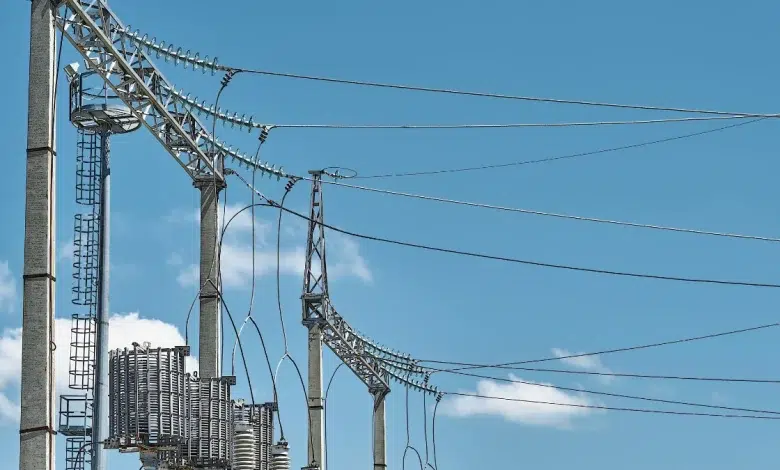Eskom Strengthens Grid in Preparation for G20 in Johannesburg

Table of contents
- Eskom Strengthens Johannesburg Power Grid Ahead of 2025 G20 Summit for Reliable Electricity
- Electricity Supply in Johannesburg: Eskom and City Power
- Eskom’s Upgrades and Grid Stabilisation Efforts
- Load Management and Reliability Initiatives
- Understanding Power Factor
- Specific Preparations for the G20 Summit
- Contingency Planning and Coordination
- Public Awareness and Energy Conservation
- Long-Term Benefits for Johannesburg’s Power Infrastructure
Eskom Strengthens Johannesburg Power Grid Ahead of 2025 G20 Summit for Reliable Electricity
As Johannesburg gears up to host the prestigious G20 summit in November 2025, Eskom intensifies efforts to ensure the power grid’s reliability. A stable electricity supply is critical for the smooth execution of this major international event. Uninterrupted power is essential for conference venues, accommodation, transport, and communications infrastructure.

Wondering how authorities are gearing up for safe global hosting? Gauteng Community Safety Forms Task Group to Manage Security and Preparations for 2025 G20 Summit. Tap to read the full story and stay informed.
Electricity Supply in Johannesburg: Eskom and City Power
Johannesburg’s electricity supply is managed through a partnership between Eskom and City Power, the municipal utility owned by the City of Johannesburg. City Power supplies most metro areas, such as Sandton, Randburg, and the Johannesburg CBD. Braamfontein and Rosebank are also included. Eskom continues to supply historically underserved areas, such as Soweto, Orange Farm, Diepsloot, Finetown, and parts of Ivory Park. The transition of supply responsibilities from Eskom to City Power in some areas is ongoing. However, it remains incomplete as of 2025.
Eskom’s Upgrades and Grid Stabilisation Efforts
Eskom has made significant progress in stabilising the national grid. This grid serves Johannesburg and the broader Gauteng province. One key achievement is the successful early return to service of Medupi Power Station’s Unit 4. This unit contributes an additional 800 MW to South Africa’s electricity generation capacity. This development is part of Eskom’s Generation Operational Recovery Plan. It aims at increasing total capacity by 2,500 MW and ensuring long-term energy security for the country.
Load Management and Reliability Initiatives
Since mid-2025, Eskom’s power system has remained notably stable with a reduction in unplanned outages. This improvement has enhanced Eskom’s ability to reliably meet winter and peak electricity demand. Eskom continues to focus on routine maintenance. The aim is to optimise the Energy Availability Factor (EAF), which currently averages around 63%. Emergency reserves are also being deployed as needed to ensure continued reliability.
Understanding Power Factor
Poor power factor adds to the facility inefficiencies, increases operating costs, increases plant breakdowns, and subsequently increases maintenance costs. Many electricity utilities charge an additional fee if a facility’s power factor is less than a specified nominal, for Eskom this is 0.96. Low power factor also reduces the electrical system’s distribution capacity by increasing current flow, thereby causing voltage drops. By improving the power factor, customers should be able to increase their productivity without requiring additional electrical capacity.
Poor power factor is caused by inductive loads (such as transformers, electric motors, and high-intensity discharge lighting), which are a major portion of the power consumed in industrial complexes. Unlike resistive loads that create heat by consuming kilowatts, inductive loads require the current to create a magnetic field, and the magnetic field produces the desired work.
Specific Preparations for the G20 Summit
In preparation for the G20 summit, Eskom has fast-tracked grid maintenance and load management strategies around Johannesburg. This is particularly true in areas critical to the summit’s venues and accommodation. The utility’s efforts focus on reinforcing transmission lines and substations. They ensure sufficient capacity to meet the expected surge in demand during the event. Eskom is working closely with City Power and the City of Johannesburg to synchronise efforts. The goal is to ensure a seamless electricity supply throughout the summit period.
Contingency Planning and Coordination
Eskom has developed detailed contingency plans that include rapid-response teams prepared to address potential faults or outages. Collaboration among Eskom, City Power, the City of Johannesburg, and event organisers will provide comprehensive preparedness. These plans address not only power but also transport, security, and communication networks. These measures aim to mitigate the risk of power interruptions during the summit.
Public Awareness and Energy Conservation
To promote grid stability, Eskom is engaging the public and businesses in Johannesburg through energy-saving campaigns during the summit period. These campaigns encourage minimising non-essential electricity use and prompt reporting of faults. Public cooperation is crucial in ensuring that the grid remains stable during such a high-demand period.
Long-Term Benefits for Johannesburg’s Power Infrastructure
While the G20 summit is driving current grid enhancements, these upgrades will have lasting benefits for Johannesburg’s power infrastructure. The improvements to the grid will enhance overall reliability for both residents and businesses. This supports Johannesburg’s economic growth and improving the quality of life for its residents long after the event.




